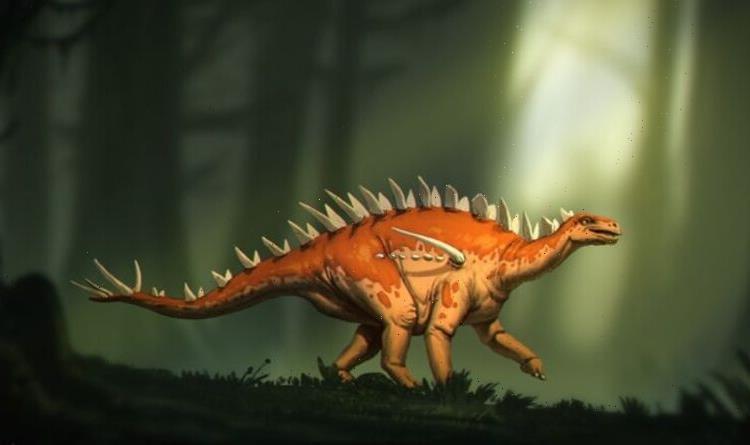Dinosaurs roamed Earth on other side of Milky Way says scientist
We use your sign-up to provide content in ways you’ve consented to and to improve our understanding of you. This may include adverts from us and 3rd parties based on our understanding. You can unsubscribe at any time. More info
Joining one of the most iconic groups of dinosaurs, the newly-identified species — named “Bashanosaurus primitivus” — was found near Laojun Village in the Chongqing municipality. With the fossil creature being relatively small at just 9 feet from tip to tail, experts have said that they are unsure at present if the specimen represents an adult or a juvenile individual. Based on the sediments from which it was unearthed, researchers have determined that B. primitivus lived some 168 million years ago, during the Middle Jurassic period — meaning that it could shine a light on where and how stegosaurs first evolved.
Instantly recognisable, stegosaurs are four-legged, plant-eating dinosaurs characterised by the huge armoured plates that project from along their back, the long spikes that stick out from the tip of their tails and their comparatively tiny heads.
The group arose sometime during the Middle Jurassic, around 168 million years ago, and endured until around 100 million years ago in the early Cretaceous.
Based on fossil discoveries — which have revealed 14 different species to date — the successful creatures lived on every continent except Antarctica and Australia.
The researchers named the new, fearsome-looking species Bashanosaurus primitivus after both “Bashan”, the ancient name for the region in which the fossil was found, and the Latin word meaning “first”, in reference to its record-breaking age.


The new specimen unearthed by the team included several armoured plates, alongside bones from the dinosaur’s back, feet, ribs, shoulder and thighs.
Compared to other stegosaurs from later in the Middle Jurassic, B. primitivus is set apart by its smaller and less-developed shoulder blade, as well as narrower and thicker bases for its armour plates.
However, some of its features bear similarities to some of the oldest-known armoured dinosaurs, which evolved some 20 million years earlier.
Paper author and palaeontologist Dr Dai Hui of the Chongqing Bureau of Geological and Mineral Resource Exploration said: “All these features are clues to the stegosaurs’ place on the dinosaur family tree.
“Bashanosaurus can be distinguished from other Middle Jurassic stegosaurs, and clearly represents a new species.”


Dr Hui added: “What’s more, our analysis of the family tree indicates that it is one of the earliest-diverging stegosaurs along with the Chongqing Lizard (Chungkingosaurus) and Huayangosaurus.
“These were all unearthed from the Middle to Late Jurassic Shaximiao Formation in China, suggesting that stegosaurs might have originated in Asia.”
Previously, the fragmentary nature of early stegosaur fossils has made unpicking their origins and relationships extremely challenging.
However, B. primitivus sports several primitive features — like longer vertebrae in the tail and narrow but flared shoulder blades — that bear similarities to some of the other earliest stegosaurs like Huayangosaurus and Gigantspinosaurus.
Other features of Bashanosaurus appear to be more unique, with a smaller bony point at the end of the shoulder blade than is common for stegosaurs, a shifted bony projection used for muscle attachment on the thigh bone and armour plates that are thicker and curved at the base.
DON’T MISS:
Ancient Egypt breakthrough as body could explain mummification origins [INSIGHT]
‘Mermaid’ mummy mystery to be blown open by scan of elaborate hoax [ANALYSIS]
New discovery reveals 40,000-year-old culture in China [REPORT]

Paper author and palaeontologist Dr Susannah Maidment of London’s Natural History Museum added: “The discovery of this stegosaur from the Middle Jurassic of China adds to an increasing body of evidence that the group evolved in the early Middle Jurassic, or perhaps even in the Early Jurassic.”
As such, she explained, stegosaurs represent some of the earliest known bird-hipped dinosaurs.
The expert added: “China seems to have been a hotspot for stegosaur diversity, with numerous species now known from the Middle Jurassic right the way through until the end of the Early Cretaceous period.”
The full findings of the study were published in the Journal of Vertebrate Paleontology.
Source: Read Full Article
